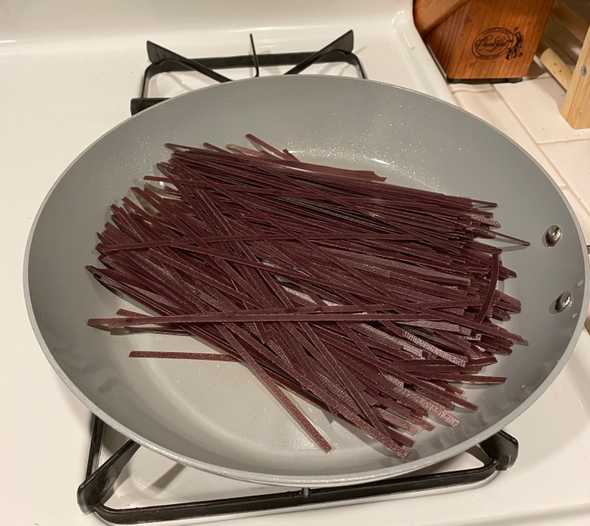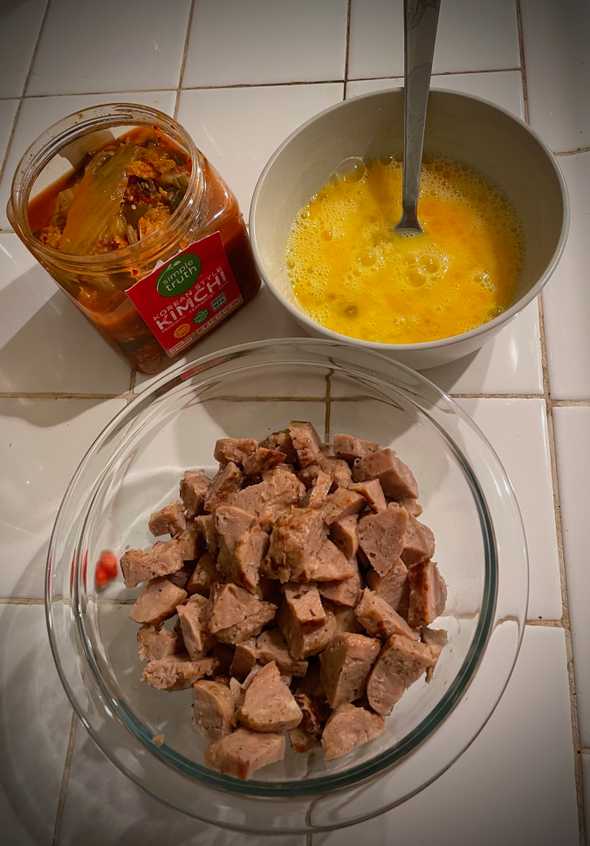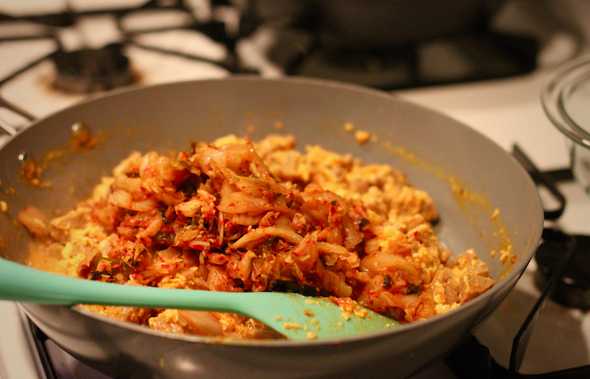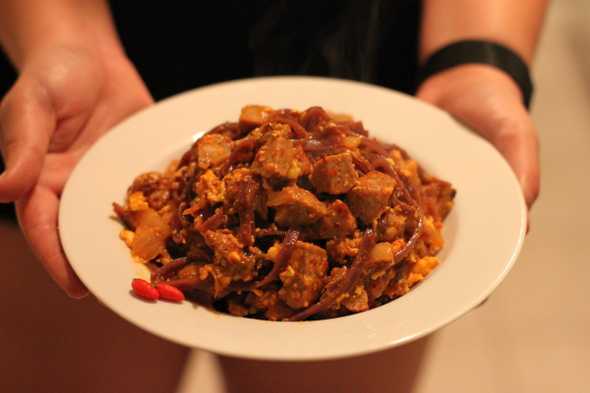Pan-Fried Kimchi Noodles
Anika on Saturday, January 16
I love pan-fried Asian noodle dishes. Pad see ew and pad kee mao are common among our go-to takeout orders from our local Thai restaurant. This dish is inspired by those types of delicious noodle dishes but with a Korean flavor profile strongly driven by the use of kimchi and gochujang.
Ingredients
- Rice noodles (we used black rice noodles in case you’re wondering about the color in the below photos)
- Kimchi
- Eggs
- Optional: protein of choice (tofu, chicken, shrimp, etc.)
- Garlic, minced
- Ginger, paste or minced
- Gochujang
- Sesame oil
- Rice vinegar
- Soy sauce
Prepare your noodles
Rice noodles are a little tricky if you’re not used to working with them. They don’t need to be boiled like wheat pastas. Packaged, store-bought noodles will provide instructions and these vary from soaking in boiled water for ~8 minutes vs. soaking in cold water for ~30 minutes. I prefer soaking rice noodles in the boiled water, but feel free to experiment or stick to the instructions on the box. Whatever method you choose, make sure to stir occasionally to keep the noodles from sticking together.
While your noodles are soaking, prepare your other ingredients. Whisk your eggs so they’re scrambled. If you’re adding a protein, chop into the preferred size. Rough chop the kimchi and make sure to reserve the brine, which we’ll add to the noodles during the cooking process.
In a large pan or wok, heat neutral oil and a little of your sesame oil on medium-high heat. Add your garlic and ginger. Stir and cook until fragrant and slightly darker in color. Add the scrambled eggs and stir frequently. Once your eggs are starting to firm up into cooked curds, add your chopped protein and kimchi and continue stirring. At this stage, you may need a little more oil so add as needed.
Stir in your kimchi brine, a good amount of gochujang (unless you’re spice averse), some soy sauce and a splash of rice vinegar. You’ll already have some acidity coming from your kimchi brine, so you don’t need much vinegar. Cook until your liquid begins to reduce and thicken. Add your drained rice noodles and stir to incorporate until your noodles are nicely coated in the delicious sauce you’ve created.
And there you have it: a funky, spicy, tangy dish that can serve as a one-pot dinner and is sure to satisfy your craving for takeout pan-fried noodles. Garnish with sesame seeds if you have them and feel free to top with extra gochujang or sambal olek if you’re a spice lord.




